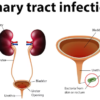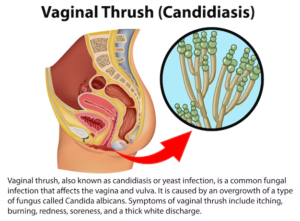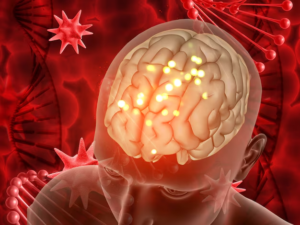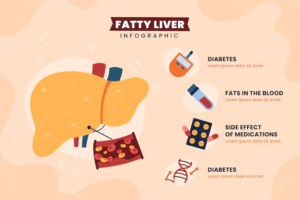Understanding Dosha Imbalances and Mood Swings: A Guide to Restoring Emotional Harmony
Understanding Dosha Imbalances and Mood Swings: A Guide to Restoring Emotional Harmony in the quest for emotional stability and overall well-being, understanding the ancient science of Ayurveda can offer profound insights. Central to Ayurvedic philosophy are the doshas, or bio-energetic forces, which govern our physical and mental processes. When these doshas become imbalanced, they can manifest in various ways, including mood swings. This blog delves into how dosha imbalances can affect mood, and offers practical advice on how to restore harmony.
The Basics of Doshas
Ayurveda identifies three primary doshas: Vata, Pitta, and Kapha. Each dosha is associated with specific elements and qualities:
- Vata: Comprised of air and ether, Vata is associated with movement, creativity, and flexibility. It governs bodily functions such as circulation, respiration, and nervous system activity.
- Pitta: Made up of fire and water, Pitta controls metabolism, digestion, and energy production. It is responsible for transformation and is linked to qualities like heat, intensity, and drive.
- Kapha: Consisting of earth and water, Kapha provides structure and stability. It influences the body’s strength, immunity, and lubrication, and is characterized by qualities of heaviness, coldness, and steadiness.
Each individual has a unique dosha constitution, or Prakriti, which represents the balance of these doshas at birth. However, imbalances can occur due to factors like diet, lifestyle, stress, and environmental changes. These imbalances can lead to disruptions not only in physical health but also in emotional stability, often resulting in mood swings.
How Dosha Imbalances Affect Mood

- Vata Imbalance:
- Characteristics: Vata imbalances are often marked by irregularity and instability. When Vata is out of balance, it can lead to symptoms like anxiety, restlessness, and mood swings.
- Emotional Impact: Individuals with elevated Vata may experience feelings of overwhelm, fear, or nervousness. The mind might feel scattered, and there may be a tendency towards insomnia or difficulty concentrating.
- Pitta Imbalance:
- Characteristics: Pitta imbalances typically involve excess heat and intensity. This can manifest as irritability, anger, or frustration.
- Emotional Impact: When Pitta is aggravated, individuals may find themselves reacting with increased aggression or impatience. There may be a tendency to experience intense emotions and conflicts, often driven by a sense of competitiveness or perfectionism.
- Kapha Imbalance:
- Characteristics: An imbalance in Kapha is often associated with lethargy, heaviness, and stagnation. It can lead to symptoms such as depression, apathy, or a lack of motivation.
- Emotional Impact: Excess Kapha may result in feelings of sadness, inertia, or complacency. Individuals might struggle with feeling emotionally stuck or disconnected from their goals and relationships.
Recognizing the Signs of Dosha Imbalances
Understanding how doshas influence mood can help in identifying imbalances. Here are some signs to watch for:
- Vata: Dry skin, constipation, irregular appetite, feelings of fear or anxiety.
- Pitta: Heartburn, irritability, excessive anger, an intense or competitive attitude.
- Kapha: Weight gain, sluggish digestion, depression, lack of enthusiasm.
Strategies for Balancing Doshas and Improving Mood
1. Dietary Adjustments
- Vata: Incorporate warm, moist, and grounding foods like soups, stews, and whole grains. Favor sweet, sour, and salty tastes to counteract the dry and irregular qualities of Vata.
- Pitta: Focus on cooling, soothing foods such as cucumbers, mint, and dairy. Avoid spicy, oily, and acidic foods that can exacerbate Pitta’s heat.
- Kapha: Opt for light, stimulating foods like leafy greens, spicy herbs, and foods with astringent tastes. Reduce heavy, oily, and sweet foods that can increase Kapha’s sluggishness.
2. Lifestyle Practices
- Vata: Establish a regular routine with consistent sleep and meal times. Engage in calming activities such as yoga and meditation to soothe the restless nature of Vata.
- Pitta: Practice cooling and relaxing activities like swimming or walking in nature. Incorporate stress-reducing techniques such as deep breathing and mindfulness to manage Pitta’s intensity.
- Kapha: Increase physical activity to stimulate circulation and reduce lethargy. Engage in invigorating exercises like aerobics or hiking, and challenge yourself with new and exciting activities.
3. Herbal Remedies
- Vata: Herbs like ashwagandha and licorice can help ground and stabilize Vata. These adaptogens support overall balance and reduce anxiety.
- Pitta: Cooling herbs such as aloe vera, coriander, and mint can help soothe Pitta. These herbs have anti-inflammatory properties and help calm the mind.
- Kapha: Stimulating herbs like ginger, black pepper, and turmeric can help invigorate Kapha and reduce its heaviness. These herbs boost metabolism and energy levels.
4. Mind-Body Techniques
- Vata: Engage in practices that bring stability and calm, such as guided meditation or progressive muscle relaxation. Creative outlets like drawing or writing can also help channel Vata’s restless energy.
- Pitta: Employ techniques that promote relaxation and reduce anger, such as visualization exercises or journaling. Focus on activities that allow you to cool down and express your emotions constructively.
- Kapha: Embrace activities that stimulate and energize, like dancing or engaging in social activities. Regularly setting and achieving small goals can also help lift Kapha’s inertia and improve motivation.
Conclusion
Understanding and balancing your doshas is a powerful way to address mood swings and promote emotional stability. By recognizing how Vata, Pitta, and Kapha imbalances affect your mood, and implementing dietary, lifestyle, and herbal adjustments, you can restore harmony and enhance your overall well-being. Understanding Dosha Imbalances and Mood Swings: A Guide to Restoring Emotional Harmony offers timeless wisdom for navigating emotional turbulence and achieving a balanced, fulfilling life.
Embrace these Ayurvedic principles and listen to your body’s needs. By doing so, you can cultivate a more balanced and harmonious existence, paving the way for emotional resilience and a more joyful life.








Leave a reply